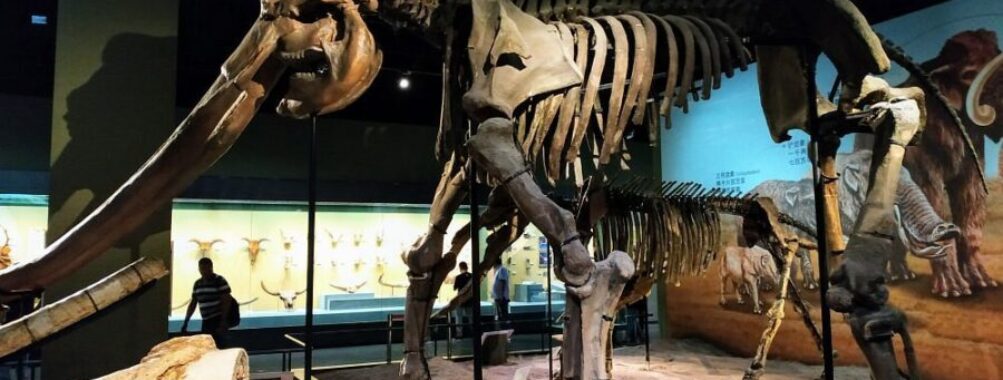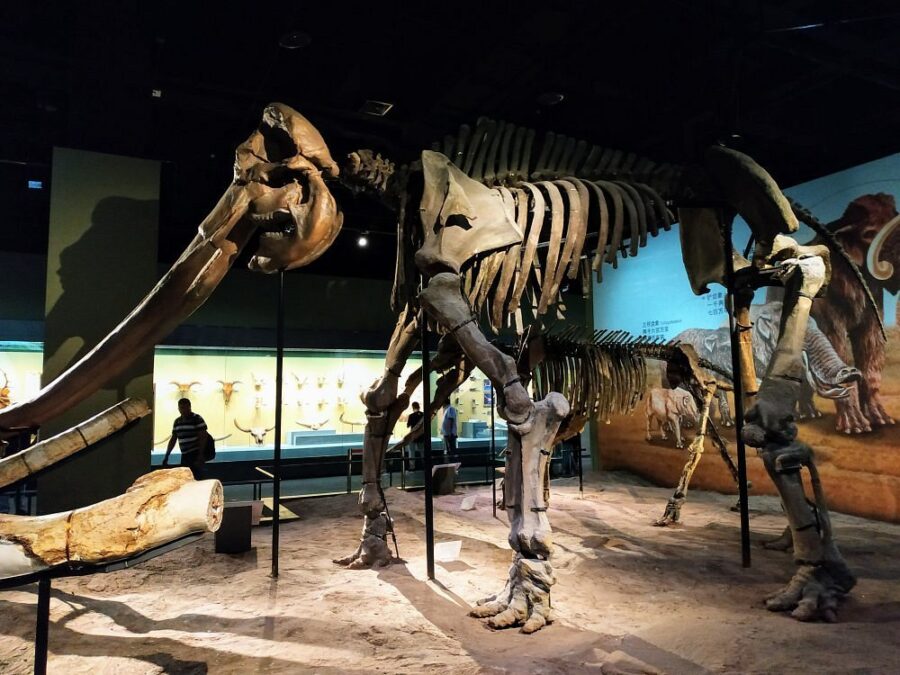
Tianjin Natural History Museum
Table of Contents
- History and Significance
- Main Attractions and Activities
- The Dinosaur Hall
- The Ocean Gallery
- Butterfly Pavilion
- Human Evolution Exhibit
- Interactive Science Zones
- Visitor Experience
- Tips for Visitors
- Accessibility and Facilities
- Unique Features
- Overall Impressions
- Pros and Cons
- Pros:
- Cons:
- Should You Go?
- Location
- Places to Stay Near Tianjin Natural History Museum
- Find and Book a Tour
- Explore More Travel Guides
History and Significance

Let’s get this out of the way first—this isn’t some dusty old cabinet of curiosities. The Tianjin Natural History Museum, opened in 2014, is a sleek, spaceship-like structure in Hexi District that makes traditional natural history museums look like your grandpa’s stamp collection. Designed by the same German architects behind Berlin’s Jewish Museum, the building itself is a statement piece, all jagged angles and reflective surfaces meant to mimic tectonic plates.
But the real story? This place was built to showcase China’s natural heritage on a global scale. With over 400,000 specimens, including some of the most complete dinosaur fossils ever found in Asia, it’s a middle finger to the idea that only Western museums get the good bones.
Main Attractions and Activities
The Dinosaur Hall
The rock stars of the museum—literally. The Mamenchisaurus skeleton (a neck so long it looks like a giraffe on steroids) dominates the room, but the real showstopper is the Tianzhenosaurus, a rare armored dinosaur found in nearby Shanxi Province. The animatronic T-Rex? Cheesy but fun—kids lose their minds when it roars.
The Ocean Gallery
A bioluminescent wonderland with deep-sea creatures suspended in glowing tanks. The giant squid specimen (preserved in formaldehyde like some science-fiction horror) is unsettlingly cool.
Butterfly Pavilion
A live exhibit where thousands of butterflies flutter around you. Pro tip: Wear bright colors—they’ll land on you. (Also, watch where you step. Butterfly casualties happen.)
Human Evolution Exhibit
A surprisingly nuanced take on human origins, with holographic Neanderthals and a life-size replica of “Lucy”, the famous Australopithecus. The section on early Chinese hominids is a rare deep dive outside the usual African-centric narrative.
Interactive Science Zones
Touchscreens, fossil-digging simulations, and a VR “time travel” experience that lets you walk with dinosaurs. (Warning: The VR can induce motion sickness if you’re prone to it.)
Visitor Experience
First thing you’ll notice? The light. The entire museum is bathed in natural sunlight thanks to the glass-paneled roof, making even the fossils look less… dead. The layout is intuitive but sprawling—you could easily spend three hours here without realizing it.
Weekdays are blissfully quiet, but weekends? Packed with school groups and families. If you hate dodging selfie sticks, visit right at opening (9 AM) or after 3 PM.
The English translations are hit or miss. Some exhibits have flawless descriptions; others read like they went through Google Translate twice. (Example: “This dinosaur is very fierce and eats many things.”)
Tips for Visitors
-
Buy Tickets Online: Saves you from the ticket line (¥30 for adults, free for kids under 1.2m).
-
Audio Guide: Worth the ¥20—some exhibits don’t have English signage.
-
Comfy Shoes: The museum is huge. Your feet will know.
-
Bring a Jacket: The AC is aggressive, especially in the Ocean Gallery.
-
Metro Access: Line 5 or 6 to Cultural Center Station—it’s a 5-minute walk.
Accessibility and Facilities
-
Wheelchair-Friendly: Ramps and elevators everywhere.
-
Stroller Rentals: Free for parents with little ones.
-
Café: Overpriced but decent—try the matcha latte if you need caffeine.
-
Gift Shop: Heavy on dinosaur plushies and weird mineral souvenirs.
Unique Features
What makes this place stand out?
-
The Architecture: It feels like walking into a sci-fi movie.
-
Local Fossils: Many specimens were unearthed in Northern China, not shipped from abroad.
-
Live Exhibits: Butterflies, coral reefs—most natural history museums don’t do “alive” this well.
Overall Impressions
This isn’t just a museum—it’s an experience. The blend of cutting-edge tech, world-class fossils, and that jaw-dropping building makes it one of Tianjin’s best attractions.
Is it as comprehensive as Beijing’s Natural History Museum? No. But it’s more immersive, more modern, and—let’s be honest—way prettier to look at.
Pros and Cons
Pros:
- Stunning, futuristic design
- Incredible dinosaur fossils (some unique to China)
- Great for kids (interactive exhibits everywhere)
- Affordable (¥30 is a steal)
Cons:
- English translations are inconsistent
- It can get crowded on weekends
- Some exhibits feel rushed (the mineral section is meh)
Should You Go?
Absolutely. Whether you’re a dinosaur nerd, an architecture buff, or just someone who likes cool shit, this museum delivers. It’s the kind of place that makes you stop and think about deep time, evolution, and why the hell butterflies love landing on red shirts.
Just don’t touch the animatronic T-Rex. It’s been through enough.
Location
Places to Stay Near Tianjin Natural History Museum
Find and Book a Tour
Explore More Travel Guides
No reviews found! Be the first to review!